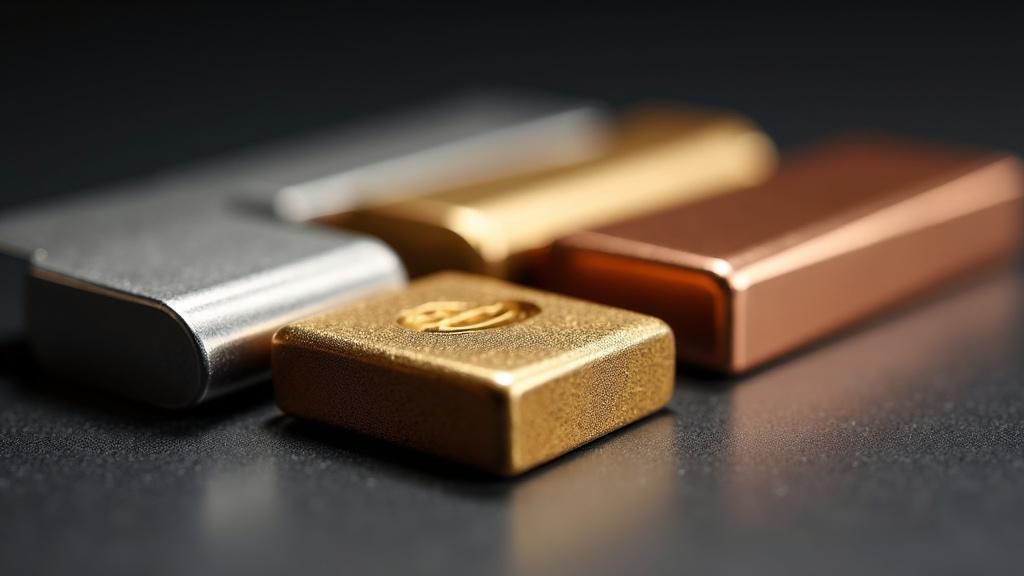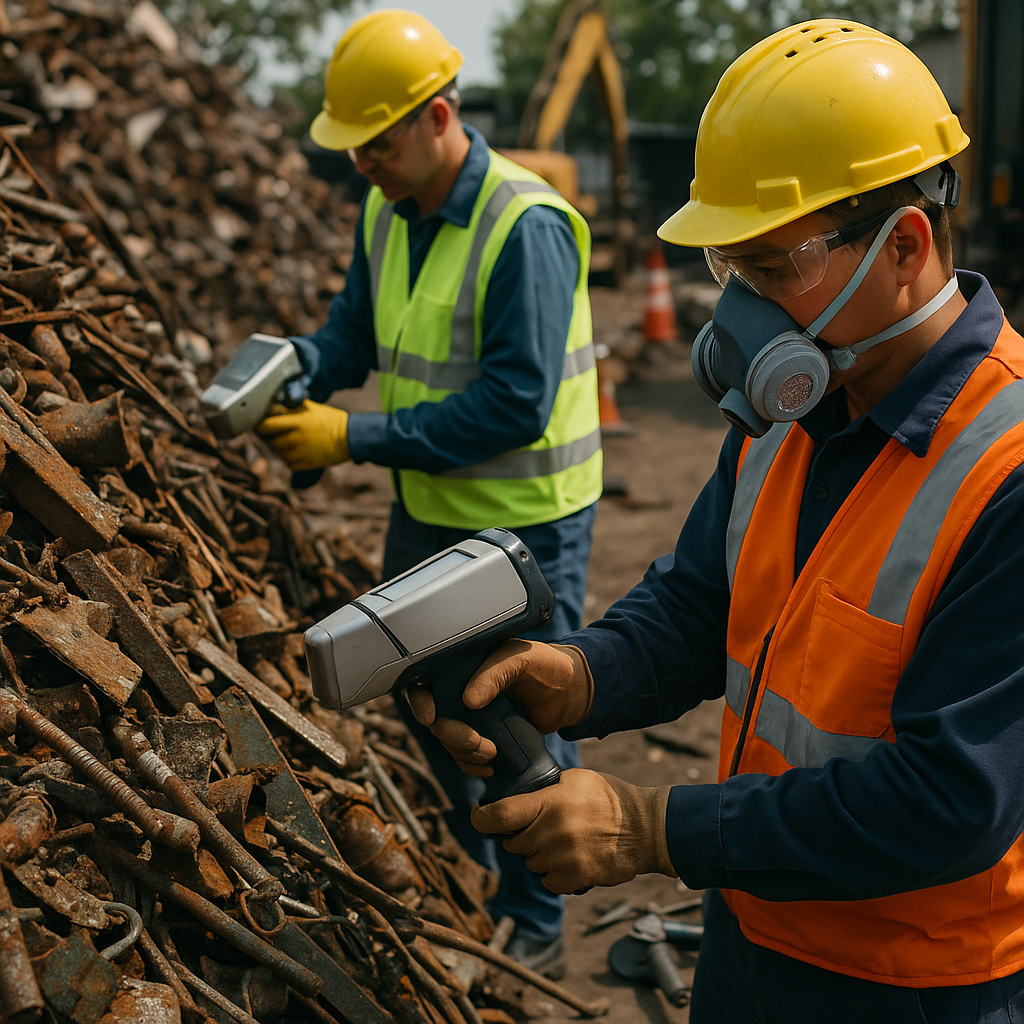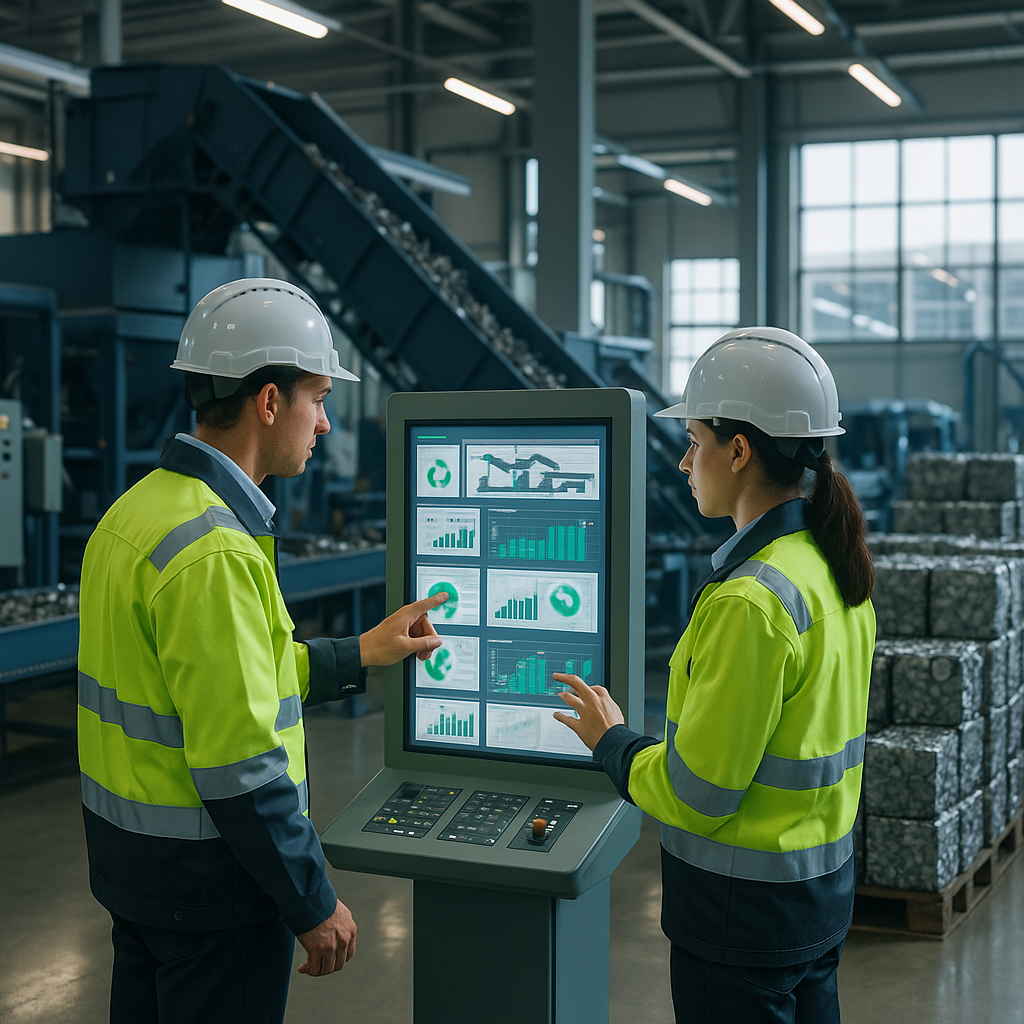5901 Botham Jean Blvd, Dallas, TX 75215
The Recycling Process for Metal Alloys: A Guide to Sorting, Processing & Challenges
October 22, 2025Recycling aluminum alloys saves up to 95% of the energy required to produce new aluminum from raw ore. This significant efficiency exemplifies why metal alloy recycling is a cornerstone of sustainability efforts. As landfills expand and natural resources dwindle, recycling metal alloys provides a practical solution to pressing environmental challenges.
Metal alloy recycling involves collecting, sorting, processing, and reusing metal combinations to manufacture new products. Unlike many materials that degrade during recycling, metals can be recycled repeatedly without losing their essential properties, making them ideal for circular economy initiatives, where materials retain their value through multiple life cycles.
The process starts with the collection of materials from various sources, including manufacturing scrap, discarded appliances, construction materials, and end-of-life vehicles. These resources are then carefully sorted to separate different alloy types before being processed into forms suitable for remelting. Through these steps, metal alloys that might otherwise occupy landfill space become valuable manufacturing inputs, conserving natural resources and reducing environmental impact.
How are Metal Alloys Sorted and Processed for Recycling?

Proper sorting of metal alloys is essential for effective recycling. Each alloy has unique properties that need to be maintained to retain their value in the circular economy. Recycling facilities utilize various advanced technologies to accurately identify and separate different alloy types.
Advanced Sorting Technologies
Modern recycling operations employ numerous technologies to sort metal alloys efficiently:
- X-ray Fluorescence (XRF) Analysis: This technology identifies alloys by detecting their elemental composition. XRF analyzers are ideal for sorting stainless steel grades, aluminum alloys, and copper-based materials by detecting elements from magnesium to uranium.
- Magnetic Separators: These devices separate ferrous metals (containing iron) from non-ferrous metals. Overband magnets are used above conveyor belts to extract ferrous materials from mixed waste streams.
- Eddy Current Separators: These are used primarily for non-ferrous metals like aluminum, copper, and brass. They generate a rapidly alternating magnetic field that induces electrical currents in non-ferrous metals, ejecting them from the waste stream.
- X-ray Transmission (XRT): This technology sorts materials based on atomic density, effectively separating heavy metals from lighter ones in mixed scrap streams.
Specialized technologies like Laser-Induced Breakdown Spectroscopy (LIBS) provide high precision for detecting light alloying elements such as magnesium and silicon in aluminum alloys. However, LIBS systems often have lower throughput and higher operational costs compared to other methods.
Processing Steps for Recycling Metal Alloys
Once sorted, metal alloys undergo various processing steps to prepare them for remelting:
- Shredding and Size Reduction: Large scrap pieces are reduced to smaller fragments, increasing surface area and improving melting efficiency.
- Cleaning and Decontamination: Alloys are cleaned to remove coatings, oils, and other contaminants that could affect the recycled material’s quality. This may involve mechanical, chemical, or thermal processes.
- Preheating: Some alloys are preheated to remove moisture and organic contaminants before melting.
- Density Separation: Materials of different densities are separated using flotation tanks or air classification systems.
- Melting and Refining: The prepared scrap is melted in furnaces, where the composition can be adjusted by adding primary metals or other alloying elements to achieve desired specifications.
These processing steps are vital for producing clean, uniform feedstock for new metal production. The quality of sorting directly influences the purity and potential applications of the recycled alloy.
Challenges in Alloy Sorting and Processing
Despite technological advancements, alloy recycling faces several challenges. For example, recycling aluminum with different alloy series (such as 2000, 6000, or 7000) in the same melt can compromise the material properties. Likewise, tramp elements or unwanted metals in steel recycling can affect the final product’s mechanical properties.
Sophisticated recycling operations now combine multiple sorting technologies to achieve the highest purity levels. For instance, a facility might first use magnetic separation, followed by eddy current separation and XRF analysis for precise alloy identification.
Creating standardized scrap streams with consistent properties remains one of the industry’s biggest challenges but also offers significant opportunities for value creation in the circular economy.
Emerging Technologies
Recent developments in artificial intelligence and machine learning are enhancing the capabilities of sorting systems. AI-powered optical sorting can now identify different metal types based on visual characteristics without relying on radiation sources like XRF. This technology is particularly promising for sorting mixed aluminum scrap, where it can distinguish between cast, sheet, and extruded products based on surface properties.
As technologies advance and recycling processes become more refined, the gap between primary and recycled metal quality continues to narrow, promoting greater adoption of recycled materials across industries.
What are the Challenges in Recycling Metal Alloys?

Contamination is a major hurdle in metal alloy recycling. When alloys contain non-metallic materials such as plastics, rubber, or hazardous substances, the process becomes more complex and costly. Even trace contaminants can compromise the integrity of recycled alloys, affecting their performance in high-quality applications.
Separation of mixed alloys presents another significant challenge. Unlike pure metals, alloys are combinations of multiple elements in specific ratios. Modern alloys with complex compositions require sophisticated sorting and processing techniques to effectively separate different metal types. The industry has developed advanced technologies such as eddy current separators, optical sorting systems, and X-ray fluorescence analyzers.
Maintaining material quality through multiple recycling cycles is an ongoing concern. Metals can degrade over time or through improper recycling, leading to inferior products. This challenge is especially evident in high-performance alloys used in automotive or aerospace industries, where material integrity is crucial. Recyclers often use downcycling, directing lower-quality recycled alloys to less demanding applications where minor property variations are acceptable.
Pre-treatment processes have emerged as an effective strategy to address these challenges. Manual sorting and cleaning remove large contaminants before materials enter the main recycling stream. Advanced operations use shredders and grinders to physically separate alloys from other materials, while flotation systems and infrared sorting further refine the separation.
The energy requirements for processing contaminated alloys present both environmental and economic concerns. Additional processing steps consume more energy, potentially reducing the overall environmental benefits of recycling. The industry continues to invest in energy-efficient technologies to clean and separate alloys while minimizing the carbon footprint.
Quality control systems are crucial for ensuring recycled alloys meet industry standards. Regular testing and analysis help identify contamination early and maintain product consistency. Many facilities have implemented closed-loop recycling systems that keep materials in controlled environments, reducing the risk of cross-contamination.
Despite these challenges, the metal recycling industry continues to innovate. Advanced refining processes now allow for better preservation of alloy properties through multiple recycling cycles. These technologies can remove more impurities and better control the composition of the final recycled product, ensuring higher quality and broader applications for recycled alloys.
What is the Future of Metal Alloy Recycling?

The future of metal alloy recycling marks a crucial shift toward sustainability and resource conservation. Advanced sorting technologies powered by artificial intelligence and machine learning are enhancing the industry’s ability to separate complex alloys with exceptional precision. These innovations allow recyclers to recover valuable metals from increasingly complicated products while maintaining the specific properties that make each alloy valuable.
Improved melting processes are significantly reducing the energy demands of recycling operations. Manufacturers are now designing new alloys with recyclability in mind, creating materials that retain their valuable properties across multiple life cycles. This proactive approach extends the usable life of metals and reduces the need for virgin material extraction.
For your recycling needs and to support a more sustainable future, contact Okon Recycling at 214-717-4083.
